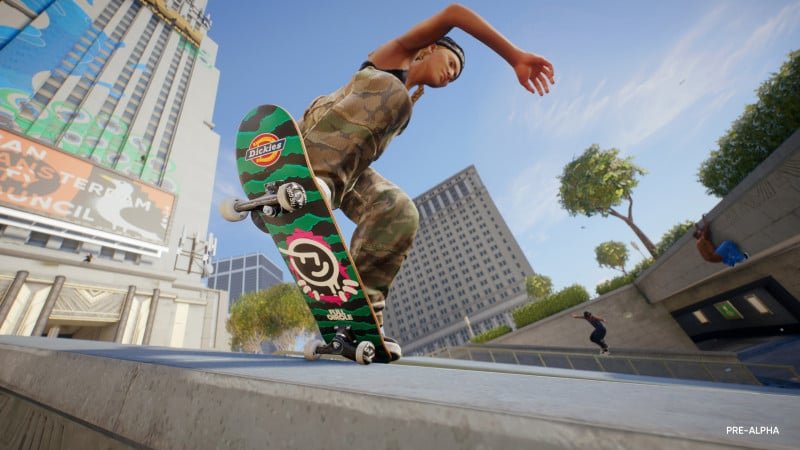The Skate video game series has been a cornerstone in the skateboarding community ever since its debut in 2007. It’s been over 15 years since a new Skate game has been released, but despite that, the chokehold the franchise has on the culture is still as strong as ever, and EA is looking to recreate that magic with Skate, the next mainline entry in the series.
Why has a new Skate taken so long to come out? Full Circle head of technology John Lawlor explained that the primary reason was because of how high the team’s ambitions were for the game.
“We had to spread it across [various] platforms, we wanted to stretch it to 150 players in a given server, we also wanted to bring back and evolve Skate’s core gameplay,” Lawlor says. “We built the studio with [only a handful] of people when Skate was originally announced. Then COVID happened in the middle of production.”
Despite the game’s long wait, the latest iteration of Skate feels like the original trilogy, and I mean that in the best way possible. Even though it’s been almost 10 years since the last time I played Skate, I was able to pick it up and quickly recall the core mechanics because of how similar they play. Using the iconic Flick-It system worked exactly as I remembered, and the team explains that’s by design.
“We went back and got the original code [for the Flick-It system],” Lawlor said. “That was the original toy, and we ported it forward and brought it to Frostbite. That’s what the team began with, and that’s how it feels like Skate. Because it is Skate.”
I was surprised by the amount of freedom I was given in the demo. The game actively encourages you to explore and create unique parks. You can do this by either exploring San Vansterdam (the city in which this new Skate takes place) or simply by building it yourself.
The latter option proved extremely useful. I completed challenges by putting up rail bars or ramps in various locations to help me complete different tasks. After I completed a challenge, whatever I placed would stay there for other players to enjoy, and it became a common occurrence for me or another player to build a random park in the middle of a plaza – a true Strand game.
When I wasn’t building parks, I climbed skyscrapers with a parkour system that reminded me of Assassin’s Creed. Once I got to the top, there would often be a hidden skatepark waiting to be used.
Creative director Deran Chung explains that the team added climbing and swinging mechanics because they knew players would eventually get to these hard-to-reach places, so they wanted to make it easier.
Even though the Skate franchise leans more towards realism, it’s not afraid to get weird. For instance, before I sat down to play, I saw a trick where the user launched themselves off a ramp and immediately laid flat on their skateboard. I couldn’t perform the trick myself, but the fact that I could do something as cool and silly as that was beautiful. The silliness didn’t end there. Skaters can roll around like a ball when off the board. It is a shockingly effective way to get around.

With the Tony Hawk games gaining popularity again, there might be a concern about that series as a worrisome competition, but Chung proudly said, “Absolutely not.” Chung believes that more skating games out there is an overall good thing, and each offers its “own flavor, and every flavor has its own validity.”
The last time I rode a skateboard in real life, it ended with me getting laughed at by a group of strangers because of how badly I fell. Despite that uncomfortable history, my time with Skate has inspired me to dust off my old board and give the hobby another go. The Skate team has put in a lot of work to ensure this installment feels as true to the franchise as all the others. And even if you’re a newcomer to the series, this Skate seems like it will be a great jumping point for getting your feet wet.
